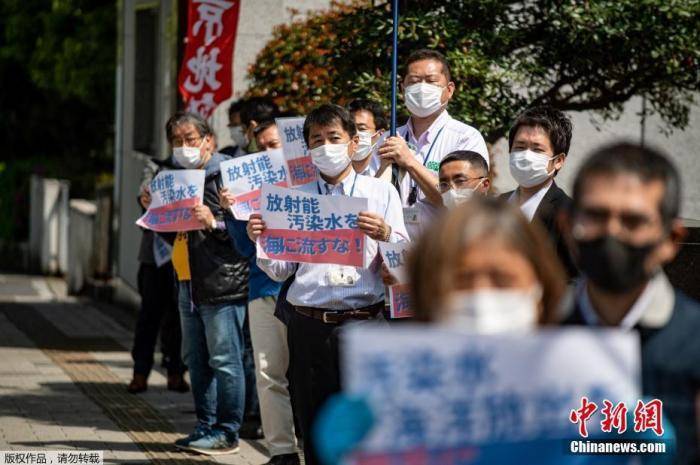China News Service, December 30. According to a comprehensive Japanese media report, since the Japanese government decided to discharge the Fukushima nuclear sewage into the sea, local people and international opposition voices have been one after another. In addition, the “frozen soil retaining wall” that Japan has invested heavily in reducing nuclear sewage is not effective.
Data map: Fukushima Daiichi Nuclear Power Plant in Japan.
Disagreements between the parties involved in the discharge of nuclear sewage are difficult to overcome
According to Kyodo News, in order to initiate nuclear sewage discharge around the spring of 2023, the Japanese government and Tokyo Electric Power Company have introduced various measures to deal with image damage and safety issues, and demonstrate transparency. Countries such as South Korea that have expressed concern still cannot bridge their differences.
Nozaki Tetsu, President of the Federation of Fisheries Associations of Fukushima Prefecture, Japan, reiterated his opposition to sea discharge.
Data map: Outside the prime minister’s house in Tokyo, Japan, local people held a rally to protest the discharge of nuclear sewage.
According to the report, after the Japanese government decided on the nuclear sewage discharge policy, it held several briefing sessions for fishermen, agriculture, forestry, tourism and other related parties in a wide range of industries. It also included image damage countermeasures in the 2021 supplementary budget. The fund is 30 billion yen (about 1.7 billion yuan) to show its support.
The report quoted a member of a ruling party in Japan as saying, “Fishermen will not be’convinced’ after all. But the key is whether they can be made to admit that’there is no other way’.”
The international community has repeatedly expressed concern about the discharge of nuclear sewage into the sea. The report pointed out that when the Japanese government emphasizes transparency to the international community, the only thing it can count on is the International Atomic Energy Agency (IAEA). However, affected by the spread of the Omi Keron mutant strain of the new crown virus, the organization has postponed the dispatch of an investigation team to conduct a safety assessment of the treated water until after 2022. According to the epidemic situation, going to Japan may be far away, and the prospects are unpredictable.
Spending huge sums of money to build “frozen soil walls” has no obvious effect
According to Japan’s “Tokyo Shimbun” report, in order to prevent the further increase of nuclear sewage due to the influx of groundwater, Japan spent 34.5 billion yen (approximately RMB 1.9 billion) to build a “frozen soil retaining wall”, but no obvious effect was seen. Since September, some underground walls have begun to show signs of loosening.

Data map: The nuclear sewage storage tank of the Fukushima Daiichi Nuclear Power Plant in Japan.
When inspecting nuclear power plants, the chairman of Japan’s Atomic Regulatory Commission Toyoshi Satata said that “frozen soil walls will not last forever” and urged TEPCO to adopt other water control plans. However, TEPCO did not come up with specific measures.
In addition, TEPCO’s eager move to discharge nuclear sewage into the sea has been questioned. According to the media survey, the increase in Fukushima nuclear sewage in Japan in 2021 will slow down, with a daily increase of about 126 tons, which is a significant decrease from 170 tons in 2020, and a quarter of the decrease in 2016. Based on this estimate, the water storage tank will not be fully full until early September 2023. However, Japan’s Tokyo Electric Power Company started a series of emissions preparations on the grounds that the water storage tanks were full in the spring of 2023.Return to Sohu to see more
Editor:
Disclaimer: The opinions of this article only represent the author himself. Sohu is an information publishing platform. Sohu only provides information storage space services.
.
